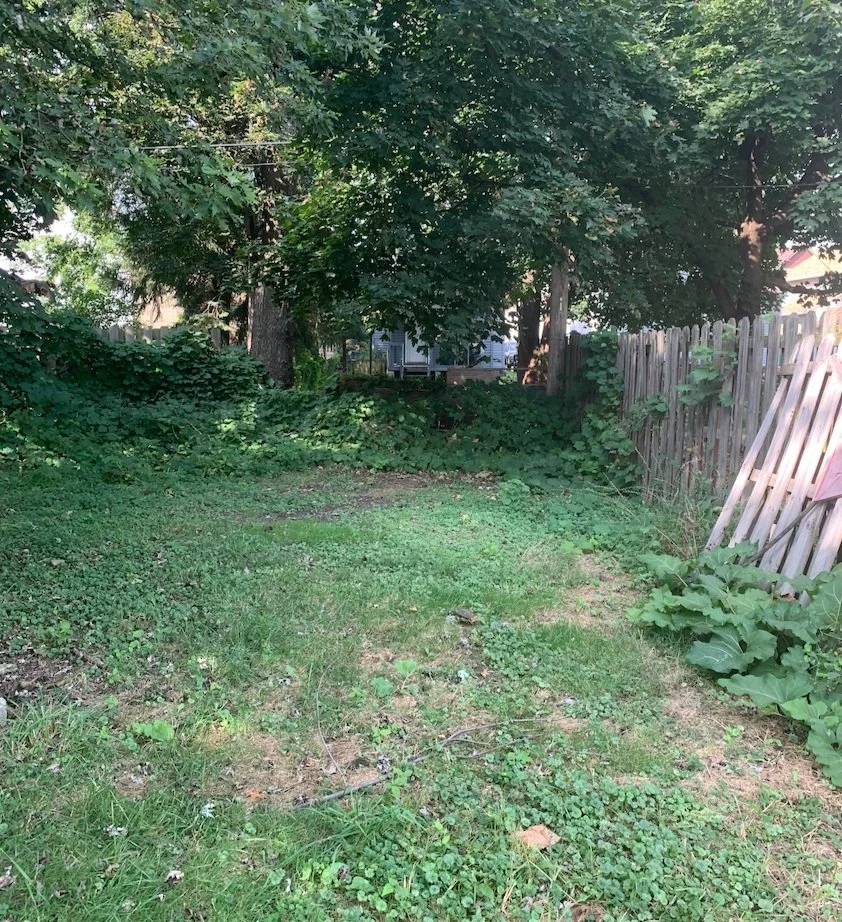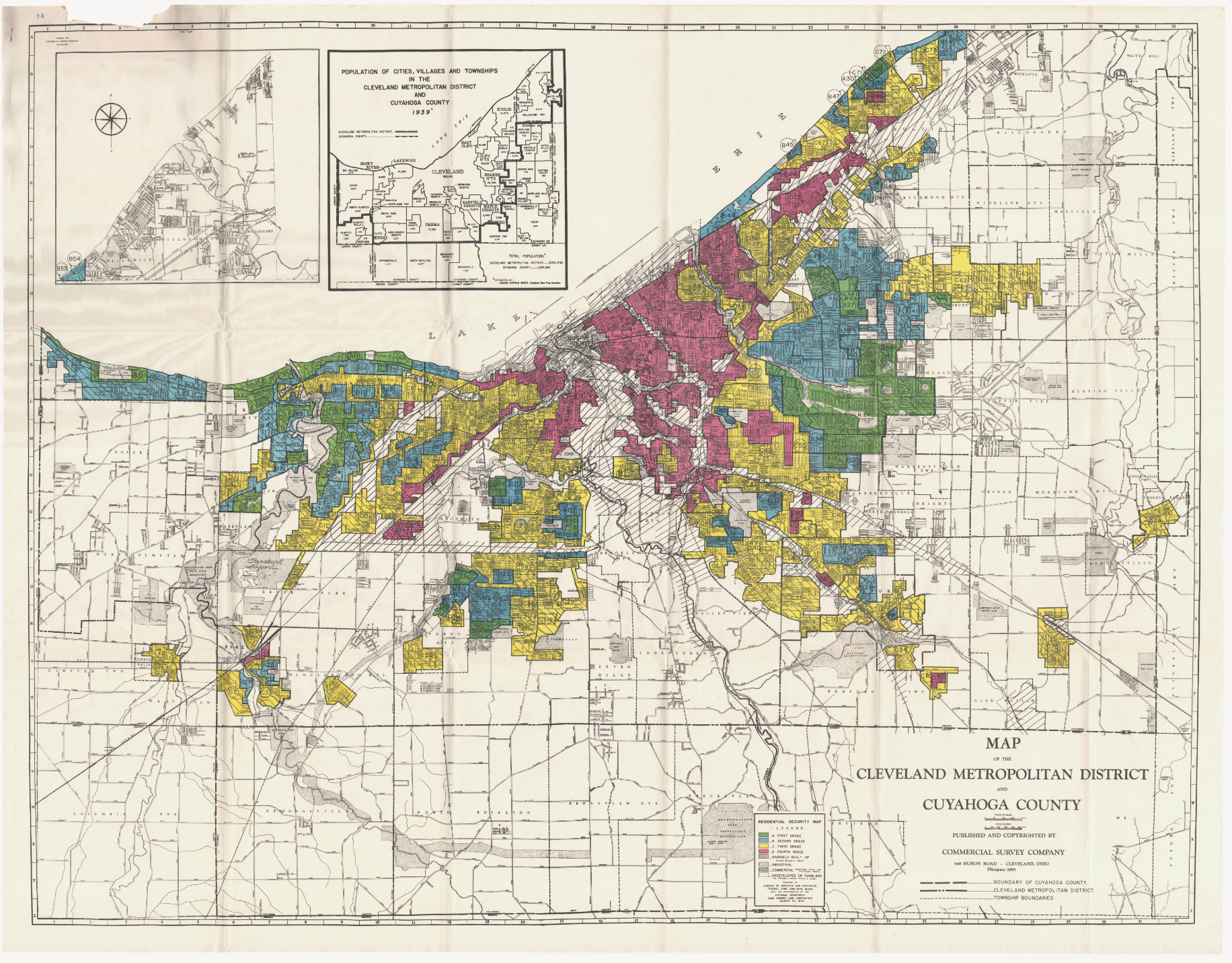Reclaiming Neglected Spaces
One of Cleveland’s thousands of vacant lots.
Did you know that 6,000 acres of empty land make up 1/8th of the total area of Cleveland? That makes Cleveland second in the nation for vacant lots. For the most part, we can trace this back to the enormous amount of governmental redlining practices that began almost a century ago. According to Isaac Robb, Vice President of Planning, Research and Urban Projects at Western Reserve Land Conservancy, “Vacant land in Cleveland is disproportionately concentrated in communities where historical redlining and predatory lending have led to foreclosures, abandonment and blight.”
What Is Redlining? A Systemic Barrier to Opportunity
Redlining refers to the practice of denying mortgages, credit, and insurance to residents of certain neighborhoods—primarily Black and immigrant communities—based on where they lived. In the 1930s, federal agencies like the Home Owners’ Loan Corporation (HOLC) created maps that labeled neighborhoods in color codes. Areas marked in red were considered major risks for investment and were largely excluded from mortgage lending. (Source: National Community Reinvestment Coalition)
To add salt to the wound, after World War II, White families were encouraged and financially backed by the Federal Housing Administration (FHA) and Veterans Affairs (VA) to become homeowners, while Black families were overwhelmingly excluded.
This systemic barrier to homeownership had long-lasting effects. Black and immigrant households were confined to segregated neighborhoods with lower property values, which drastically limited their ability to build equity and pass on wealth to future generations. In Cleveland specifically, many of the neighborhoods that banks redlined almost a century ago have the highest rates of poverty and crime in the city today.
The Fair Housing Act
Permanent roadblocks still exist today along part of the historic redline between Cleveland and Shaker Heights.
In 1968, Congress passed the Fair Housing Act, making redlining practices illegal. However, it took another 13 years before any federal agency began collecting data on who was actually receiving home loans—leaving a wide gap for exclusionary lending practices to continue. (Source: National Community Reinvestment Coalition)
Reclaiming Neglected Spaces
Cleveland’s historic redlining practices and its resulting vacant lot crisis is not just an economic issue—it’s a map of injustice.
But it can also become a space where we seek God’s Kingdom-justice, hope, and healing here on earth. That’s why we are honored to be collaborating with My Sistas Keeper for our Documentary Songwriting (DocSong) project in 2025. Their vision for urban gardening and beekeeping, especially in the face of barriers that have long shaped Cleveland’s urban landscape, reveals their tenacity, courage, and creativity. Their work is a powerful example of how communities can reclaim and repurpose neglected spaces.
We can’t wait to share their story with you through song—A Hive’s Song! To find out when we’re performing, go to our calendar of events page on our website!
The ladies (and honorary male member) of My Sistas Keeper.




